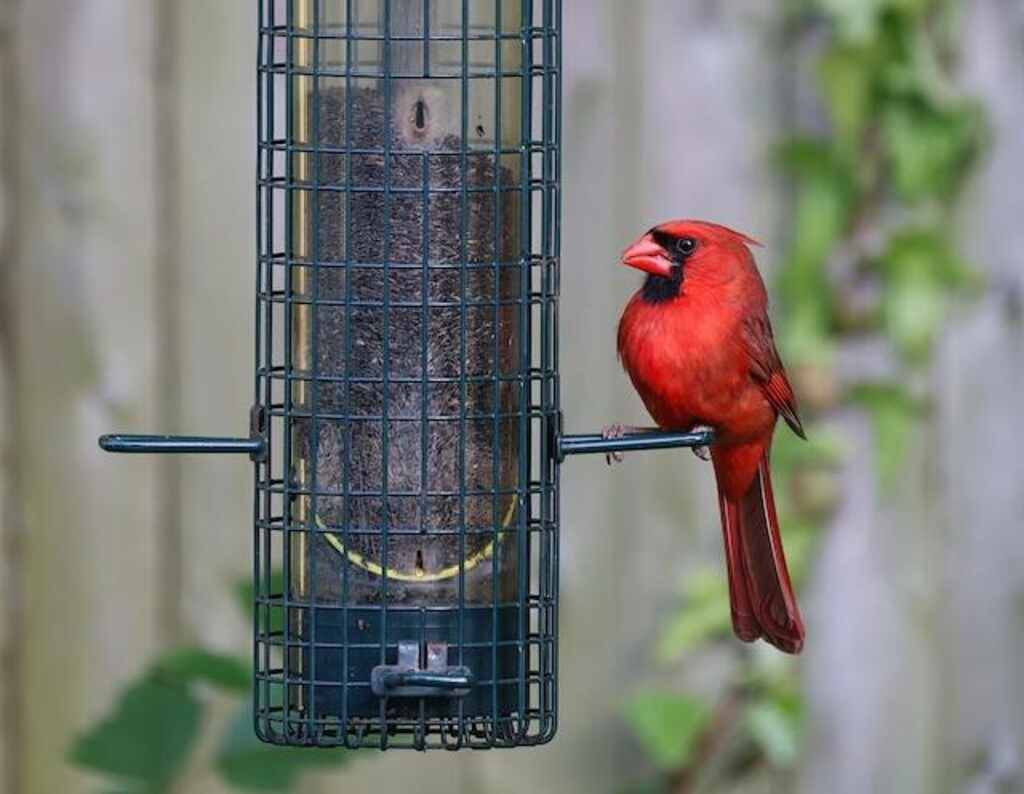Have you ever wondered which birds enjoy thistle? In this guide, we dive into the avian world to discover the species that favor thistle as part of their diet, exploring their feeding habits and preferences.
Table of Contents
What is Thistle?
Thistles are a flowering plant that belong to the Asteraceae family. They have sharp prickles on their leaves and stems, which help protect them from predators. The seeds of thistles are small and black with white fluff, making them easy to recognize.
Thistles grow wild in fields, meadows, and along roadsides. They can also be cultivated in gardens for ornamental purposes.
| Common Name | Scientific Name |
|---|---|
| Canada Thistle | Cirsium arvense |
| Bull Thistle | Cirsium vulgare |
| Milk Thistle | Silybum marianum |
The Importance of Thistle for Birds
Birds rely on a variety of food sources to survive throughout the year. In the fall and winter months, when insects and berries become less abundant, many bird species turn to seed-eating as their primary source of nutrition.
Thistle seeds are highly nutritious, with high levels of protein and fat content relative to their size.
This makes them particularly important for birds during the colder months, when they need more energy to maintain their body temperature.
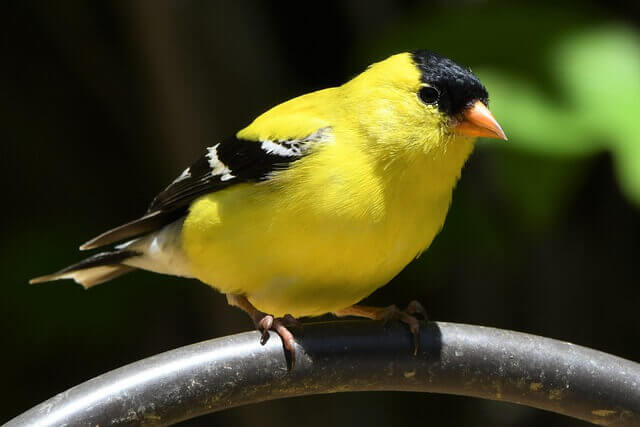
Nutritional Benefits of Thistle
Thistle seeds offer several nutritional benefits for birds. Here are some of the key advantages:
- High Protein: Thistle seeds are rich in protein, which is essential for birds’ growth, development, and overall health. Protein is necessary for building and repairing body tissues, producing enzymes and hormones, and supporting various physiological functions.
- Energy Source: Thistle seeds are high in fat content, providing birds with a concentrated source of energy. Fat is a crucial energy source, especially during periods when other food sources may be scarce, such as winter months or migration periods.
- Essential Nutrients: Thistle seeds contain important nutrients such as calcium, magnesium, and phosphorus. These minerals are vital for maintaining healthy bones, feathers, and overall physiological functions in birds.
- Fiber: Thistle seeds also contain fiber, which aids in digestion and helps promote healthy gut function in birds. Adequate fiber intake is necessary for proper digestion and nutrient absorption.
- Nutritional Variety: Including thistle seeds in a bird’s diet adds diversity and variety to their nutrition. Different bird species have different dietary requirements, and offering a variety of food sources, including thistle seeds, helps ensure birds receive a balanced diet.
It’s important to note that while thistle seeds offer nutritional benefits, it’s recommended to provide a well-rounded diet for birds by offering a variety of other birdseed types, fresh fruits, and vegetables.
This helps ensure that birds receive a wide range of nutrients necessary for their overall health and well-being.
Here’s a table outlining the nutritional benefits of thistle seeds for birds:
| Nutritional Benefits | Description |
|---|---|
| High Energy Content | Thistle seeds are rich in fats and oils, providing birds with a concentrated source of energy. |
| Protein-Rich | Thistle seeds are high in protein, which is essential for birds’ muscle development, growth, and overall health. |
| Essential Nutrients | Thistle seeds contain essential vitamins and minerals, including vitamin E, calcium, magnesium, and phosphorus, which support birds’ overall well-being. |
| Winter Survival | Thistle seeds are particularly beneficial during the winter months when other food sources are scarce, helping birds maintain their body temperature and energy levels. |
| Digestive Aid | The high fiber content in thistle seeds aids in digestion for birds, promoting a healthy digestive system. |
Please note that this table provides a general overview of the nutritional benefits of thistle seeds for birds and may not encompass all the specific details or variations for different bird species.
Types of Birds That Eat Thistle
Finches
Finches are small, colorful birds that belong to the family Fringillidae. They are known to be seed-eaters and thistle is one of their favorite foods. Some of the most common types of finches that feed on thistle include goldfinches, house finches, and purple finches.
Goldfinches
Goldfinches are beautiful birds with bright yellow feathers and black wings. They have a unique chirping sound and feed mainly on thistles during the breeding season.
You can spot them easily in your yard by looking for their distinct coloring and listening for their sweet chirping sounds.
House Finches
House finches are also known as “linnet” or “redpoll.” They have a reddish color on their head, chest, and back with brown streaks on their wings. These birds love to eat thistle seeds from tube feeders or mesh bags.
Purple Finches
Purple finches are named after the color of their plumage. They have a rusty-red head, breast, back and rump along with brownish streaks on the sides.
These birds can be found throughout North America during migration season and will readily eat Nyjer seeds (thistle) from birdfeeders.
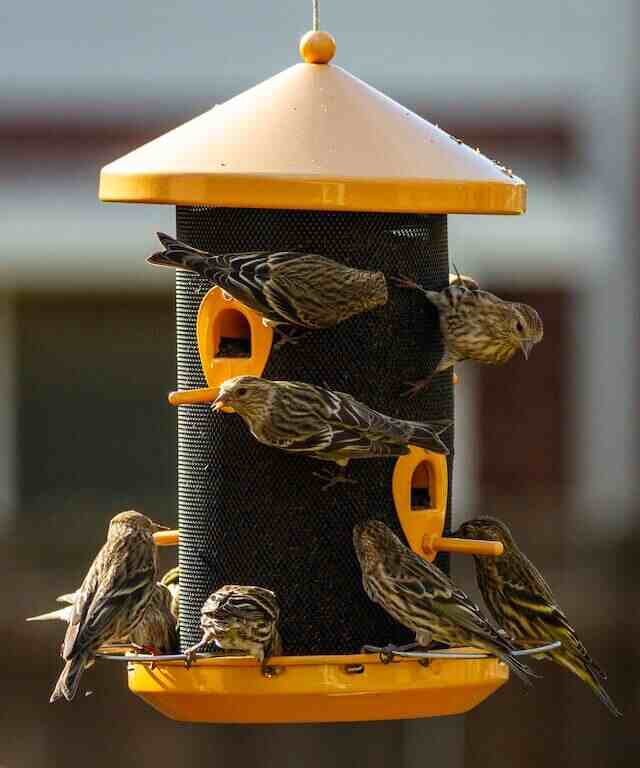
Sparrows
Sparrows are small-to-medium-sized birds in the family Passeridae. There are many different species of sparrows across North America that enjoy eating thistle seeds. Some examples include song sparrows, white-crowned sparrows, chipping sparrows.
Song Sparrows
Song sparrows have a brown cap with grayish-brown wings and tail feathers. Their song is a series of repeated notes that can be quite beautiful to hear. They will eat Nyjer seed from thistle feeders but also enjoy insects, fruits, and seeds.
White-crowned Sparrows
White-crowned sparrows are medium-sized birds with distinctive black and white-striped heads. You can attract these birds to thistle feeders in your yard by providing them with a variety of different seeds including sunflower, millet and Nyjer seed.
Chipping Sparrows
Chipping sparrows are small birds with brown streaks on their back and a rusty cap on top of their head. These sparrows are known for their distinctive chip-chip-chip call.
They will readily eat thistle seed from birdfeeders, along with other small seeds like millet and sunflower seeds.
Pine Siskins & Redpolls
Pine siskins and redpolls are two species of finches that are found across North America during migration season. They both have a yellowish-brown coloration with darker streaks on the wings and back.
Both pine siskins and redpolls love to eat thistle seeds from tube feeders or mesh bags. Many different types of birds enjoy eating thistles as part of their diet.
By providing the appropriate feeding stations in your yard, you can attract various species such as finches, sparrows, pine siskins, and redpolls to feast on these nutritious plants.
Remember to keep birdfeeders clean and properly filled in order to maintain a healthy environment for these wonderful creatures!
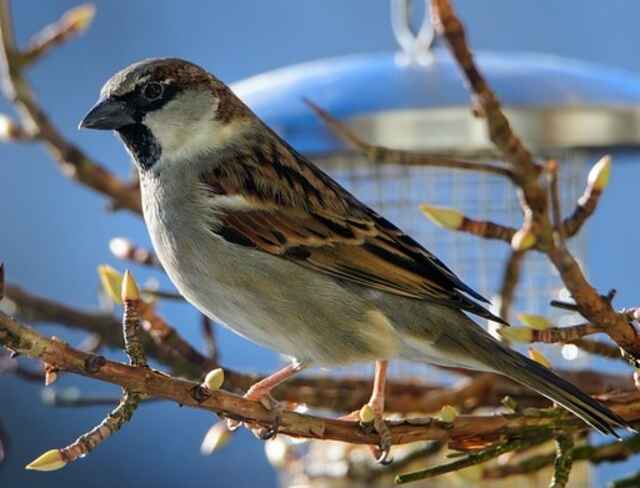
Thistle Feeders for Birds
Tube Feeders
One of the most popular types of feeders for thistle-eating birds is a tube feeder. These feeders are typically tall, slender cylinders made of plastic or metal mesh. They have small feeding ports that allow birds to cling and feed at the same time.
Tube feeders are great for attracting finches, pine siskins, and other small songbirds that enjoy eating thistle seeds.
They can hold a large amount of seed and often come with multiple feeding ports to accommodate several birds at once.
Hopper Feeders
Hopper feeders are another type of bird feeder that can be used to offer thistle seeds to your feathered friends. These feeders have a container that holds seed and a tray or perch where birds can sit while they eat.
They typically have larger openings than tube feeders, making them easier to refill and clean. Hopper-style thistle feeders often attract a variety of bird species including finches, sparrows, chickadees, and nuthatches.
Mesh Feeders
Mesh thistle feeders are similar in design to tube feeders but have a mesh material rather than solid walls, allowing the birds access to the seeds from all directions while clinging on with their feet.
The mesh allows many more birds at once than other types of feeder, but caution is advised because sometimes those “other” birds may eat everything before your target species, get there!
The size and shape of these types of birdfeeders vary greatly, so choose one according to your particular needs.
Attracting Birds That Eat Thistle
In addition to providing appropriate thistle seed-filled birdfeedrs , you also want yo bring the right environment where these seed-eating species thrive.
Planting suitable vegetation like thistle seeds in your garden or yard can attract more birds that like to eat thistle.
You may also want to consider planting other types of vegetation that attract insects and worms because many of the birds that feed on thistle also enjoy a variety of insects.
Another way to attract these birds is by making sure you clean and maintain your birdfeeders regularly.
Birds are sensitive to bacteria and fungus, so cleaning your feeders at least once a month with a solution of 1 part bleach to 9 parts water is recommended.
Make sure you rinse the feeder well before refilling it with fresh seed.
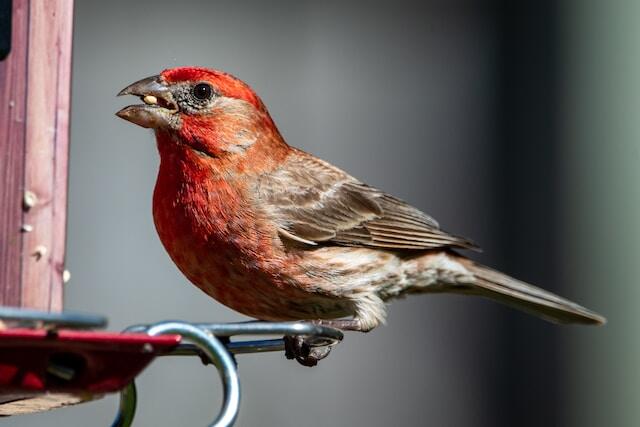
How to Attract Birds that Eat Thistle
Planting thistles in your garden or yard
One of the best ways to attract birds that eat thistle is by planting these plants in your garden or yard. Thistles are easy to grow and require minimal care, making them perfect for busy people who want to create a bird-friendly environment.
The most common variety of thistle used for feeding birds is the niger seed, which is also known as black seed or nyjer.
When planting thistles, it’s important to keep in mind that they prefer well-drained soil and full sun exposure. You can start by selecting a spot in your garden or yard with these characteristics.
After preparing the soil, sow the seeds at a depth of approximately 1/8 inch and keep them moist until germination occurs.
Once the plants have grown, they will start producing blooms, which will eventually turn into seeds that birds love.
Placing birdfeeders filled with Nyjer seed (thistle seed) in your yard
Another way to attract birds that eat thistle is by placing birdfeeders filled with Nyjer seed (thistle seed) in your yard.
These birdfeeders are specially designed for holding tiny nyjer seeds, which are loved by finches, sparrows and other small birds. When setting up these feeders, it’s important to take care in selecting the location.
You want a spot visible from inside, so you can enjoy watching the birds visit your feeder but not too close where you may disrupt their feeding habits.
Also ensure there are no obstacles such as windows or other hazards nearby, Have multiple feeders available especially during peak migration times when demand may be high
Cleaning and maintaining birdfeeders regularly
Keeping birdfeeders clean and maintained regularly is another important factor when it comes to attracting birds that eat thistle.
Dirty feeders can lead to the growth of bacteria and fungi, which can be harmful to birds’ health. Therefore, it’s important to clean the feeders once a month using a birdfeeder brush and soapy water.
Rinse thoroughly with water and allow them to dry completely before adding Nyjer seeds. In addition, checking for any physical damage or wear on the feeder is important.
Make sure holes or gaps are not allowing moisture in, which will eventually cause feeding tubes or ports to clog. Replace any damaged parts as needed.
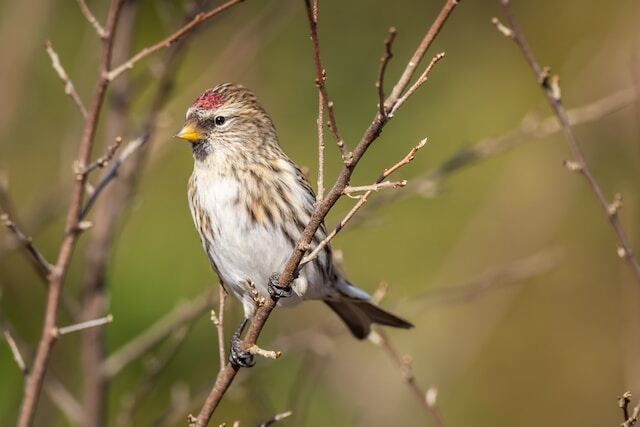
Conclusion
Summary of the Types of Birds that Eat Thistles
Thistles are a favored food source for many species of birds, including finches, sparrows, pine siskins, and redpolls.
These birds have specially adapted beaks that allow them to extract the tiny seeds from the thistle flower heads.
Finches in particular are well-known for their love of thistle seeds and can often be seen feeding at thistle feeders in backyards across North America.
The Importance of Providing Food Sources for Birds in Our Environment
Birds play an essential role in our environment as pollinators and pest control agents. They also bring joy and beauty to our lives with their colorful plumage and sweet songs.
By providing food sources like thistles, we can help support bird populations even in urban areas where natural food sources may be scarce.
In addition to helping individual birds thrive, providing food sources can also contribute to conservation efforts for threatened or endangered bird species.
For example, planting native thistles in your yard could help attract goldfinches or other birds that may face habitat loss due to development or climate change.
Encouragement to Take Action and Attract More Birds into Our Yards by Planting Thistles and Using Appropriate Birdfeeders Filled with Nyjer Seeds (Thistle Seeds)
If you’re looking for a way to attract more birds into your yard, planting thistles is a great place to start. You can choose from a variety of native or non-invasive species depending on your location and climate.
To supplement natural food sources like growing thistles, consider using birdfeeders filled with Nyjer seeds (thistle seeds). These small black seeds are highly nutritious and provide a consistent source of food throughout the year.
By taking these simple steps, you’ll not only be supporting local bird populations, but you’ll also be able to enjoy the beauty and entertainment they bring to your backyard.
So next time you’re planning your garden or looking to upgrade your bird feeding setup, remember that thistles are a valuable resource for birds and a key component of a healthy ecosystem.

